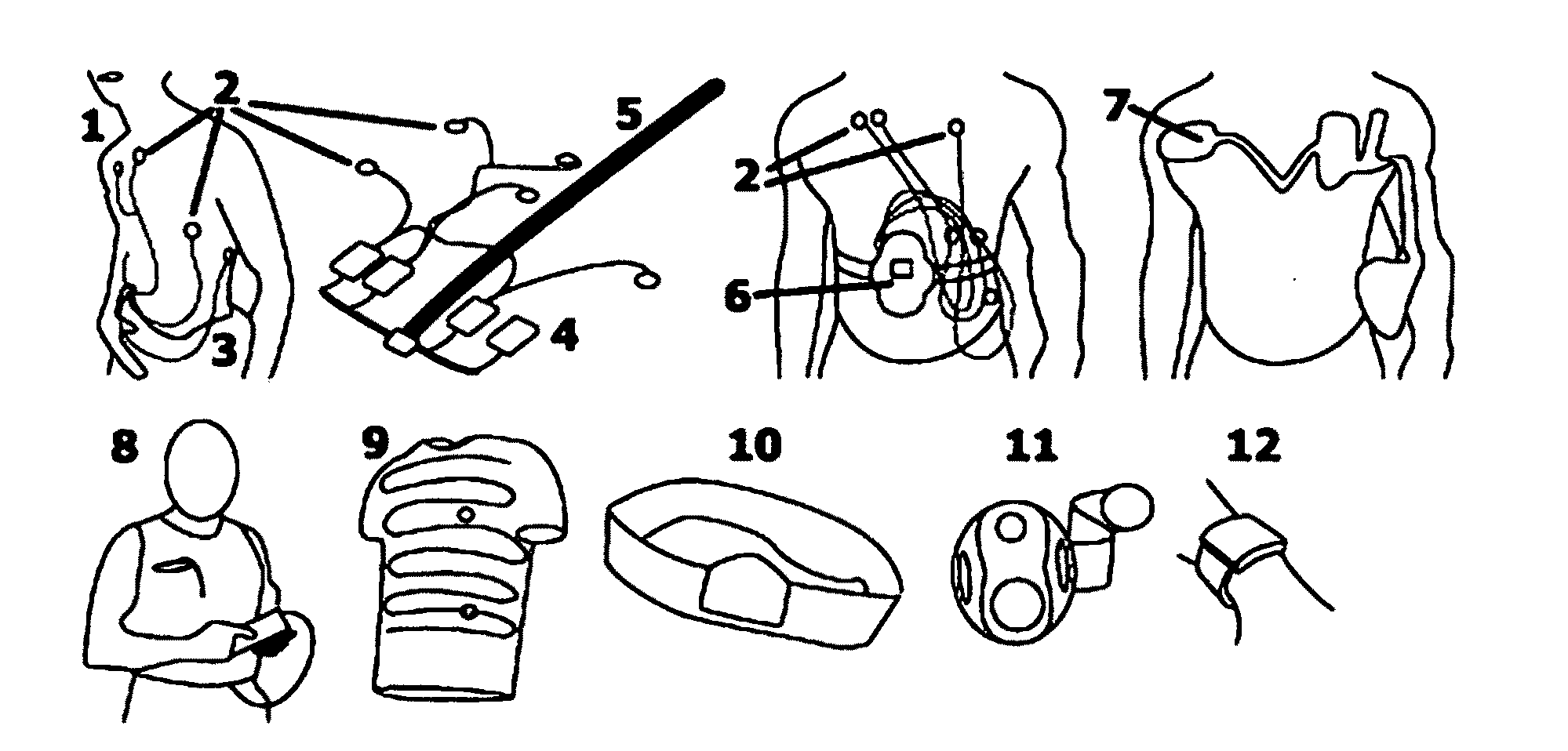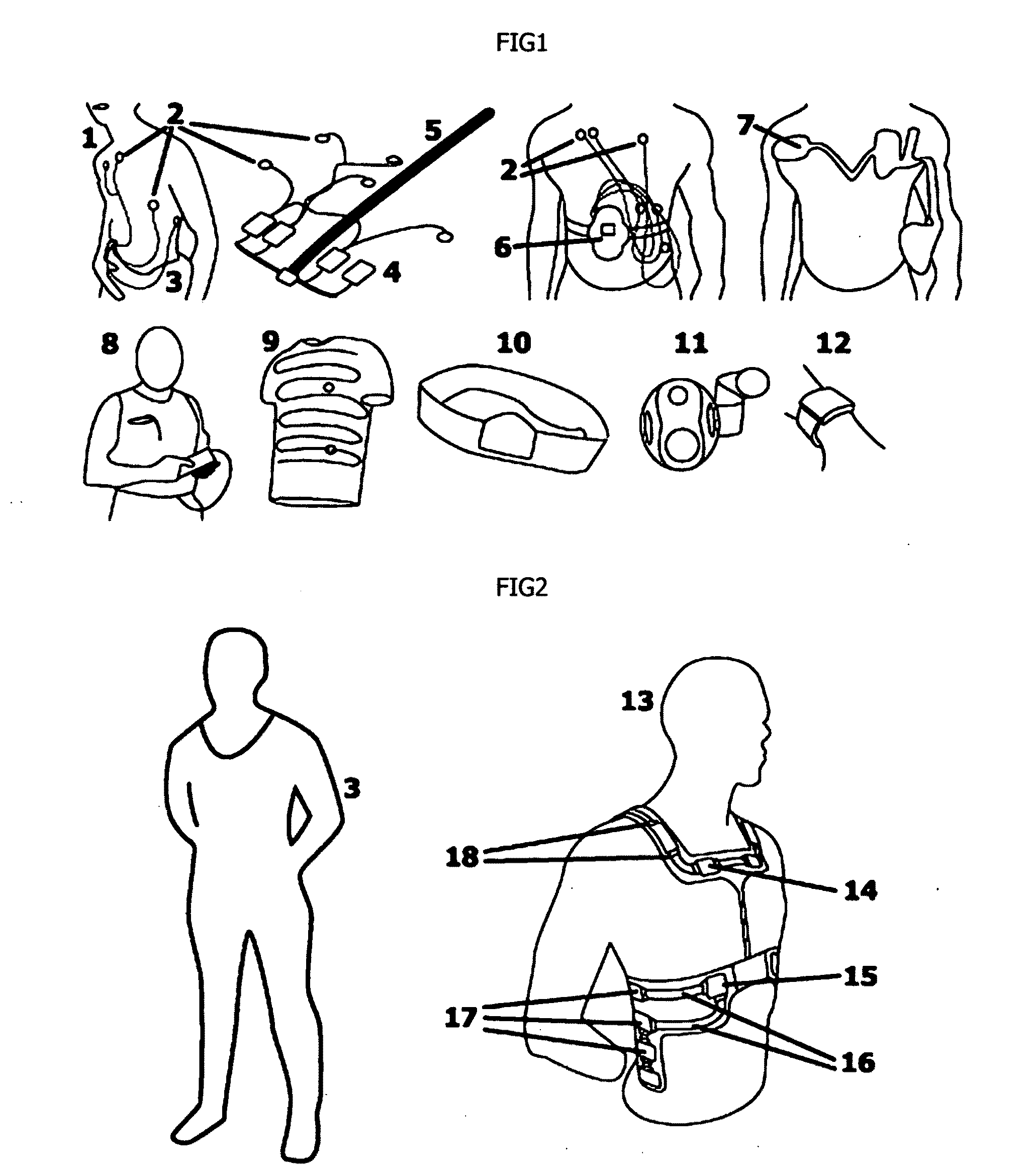Wearable Electronic System
a technology of electronic system and wearable, which is applied in the direction of diagnostic recording/measuring, application, coupling device connection, etc., can solve the problems of unsuitable clothing underwear, cumbersome dangling wire cables, slow attachment procedure, etc., and achieves convenient replacement, simplified correct placement of any required skin electrodes, and higher data rate
- Summary
- Abstract
- Description
- Claims
- Application Information
AI Technical Summary
Benefits of technology
Problems solved by technology
Method used
Image
Examples
Embodiment Construction
[0038]FIG. 1 shows a wearable electronic health 1 monitor worn by NASA astronauts during the Apollo moon missions. A series of electrical body sensors (electrodes) 2 are shown attached to the upper torso. These are worn underneath the tight fitting liquid cooling ventilation garment 3. Also shown are the electronic circuit modules 4 strung around the waist in a belt like fashion and connected through a multi-core electrically conductive cable 5. The electronic circuit modules 4 are condensed into a smaller unit 6 shown attached to the frontal chest area of the Lifeguard wearable electronic health monitor. ECG electrodes 2 are substituted for a partially integrated set of electrodes 7 believed from the Nexan company. The Lifeshirt wearable electronic health monitor from the Vivometrics company is shown 8, a shirt consisting of woven wires and optical fibers from the Sensatex company is shown 9, a waistband from the Zephyr company is shown 10, an armband from the Bodymedia company is ...
PUM
 Login to View More
Login to View More Abstract
Description
Claims
Application Information
 Login to View More
Login to View More - R&D
- Intellectual Property
- Life Sciences
- Materials
- Tech Scout
- Unparalleled Data Quality
- Higher Quality Content
- 60% Fewer Hallucinations
Browse by: Latest US Patents, China's latest patents, Technical Efficacy Thesaurus, Application Domain, Technology Topic, Popular Technical Reports.
© 2025 PatSnap. All rights reserved.Legal|Privacy policy|Modern Slavery Act Transparency Statement|Sitemap|About US| Contact US: help@patsnap.com



